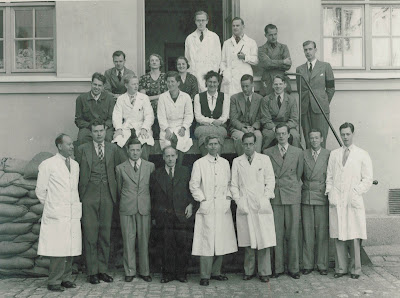PHOTO: The local Corvallis, Oregon newspaper on their religion page carried an opinion Colum by Rev. Barbara Nixon, "Religion: A Christian Case for marriage equality," Gazette-Times, Aug. 15, 2015, p. A7. Nixon also coordinates the content for the Gazette-Times Lifestyles Religion "Faith and Values" page. (For more about her church, see Barbara Nixon, Pastor, Corvallis First United Methodist Church, Corvallis, Oregon corvallisfumc.org)
"I am a Christian who supports marriage equality. I am pastor of First United Methodist Church here in Corvallis, which has long stood for this as a matter of justice. Gay and straight couples alike may come for premarital counseling and ceremony planning. They may join their lives together before God in our sanctuary with me serving as their officiant. We celebrate marriage as one of the ways God's love can move in the world and we do not believe this avenue for love is limited to straight people.
While this view we hold along with many other United Methodist churches is in opposition to some of our denomination's official church policy, we stand firmly with many other Christians on this issue, trusting we are being true to what we are called to do as followers of Jesus.
I know there are many Christians who do not agree. Their voices are easily and often heard on this topic. In fact, Christian values have been used by Christians and non-Christians alike to make the case against gay marriage and against homosexuality in general. I do not speak for them.
But I do think it is very important to give voice to the alternate Christian perspective - the one held by many of us who follow Jesus and who have drawn very different conclusions.
First, the idea that biblical marriage is based on one man and woman is simply not in line with scripture, in which women were essentially property and men could have one or more wives. Certainly there were loving marriages but we cannot act as if what we value as marriage today rises directly from this property-based understanding.
Second, the word homosexuality is a word that came into the English language in the 1800s, after which it was used in translations of the Bible as the word to describe male rape, incest, ritual sex and other practices not connected at all to how we understand relationships between same-sex couples today.
Third, Jesus does not speak on this topic. He spent much of his time teaching about the kingdom of God - here on earth - where love and justice will reign. In reading the Bible holistically, looking at it through lenses of reason, experience and history, we begin to see how to focus on the work of this kingdom!
Christians like me cringe when we hear "love the sinner, hate the sin." What we have learned about gender and sexual orientation - genetics, anatomy, hormones, brain chemistry - in all its variations tells us homosexuality is not the stuff of sin but of humanity. We want gay, lesbian, bisexual and transgendered (GLBT) people to know there are Christians who honestly accept the fullness of who they are.
Christians like me feel compelled to stand with GLBT people when they are accused of ruining our society and bringing the wrath of God upon us. We want them to know that we don't believe God causes natural disasters to punish ANYONE for anything. And we don't believe GLBT people are responsible for the messes we have made collectively in our nation. Furthermore, when 50 percent of all straight marriages have been failing for years, we don't see how gay marriage can be held responsible for future matrimonial failures.
It is not my desire or intent to try to change the minds of those Christians who will, no doubt, strongly disagree with me. My intention is simply to give voice to a distinctly different understanding of homosexuality and gay marriage, and to declare, as a follower of Jesus, that it is indeed a Christian perspective."
(Quoted from Rev. Barbara Nixon, "Religion: A Christian Case of marriage equality," Gazette-Times, Aug. 15, 2015, p. A7 -- Barbara Nixon, Pastor, Corvallis First United Methodist Church, Corvallis, Oregon corvallisfumc.org is coordinator of the Gazette-Times Lifestyles Religion "Faith and Values" page)
I was pleased to see this opinion piece nearly 40 years after when the paper was flamed by angry readers for printing a story about two women who wished they could marry. See previous posts:
- My opinion on upcoming gay marriage court decisions printed in local newspaper (1/28/15) - blog post includes a photo of a 1976 Gazette-Times story about two women wishing to get married that I wrote about previously: Thomas Kraemer, "Corvallis, Oregon State University gay activism 1969-2004," printed to PDF from OutHistory.org in 2010 permanently stored by the OSU Scholars Archives @ OSU
- Baker marriage hits N.Y. Times front page only 4 decades late (5/17/15)
- Baker on gay marriage in 1972 vs. 2015 reaction to Supreme Court ruling (7/7/15)
- Gay marriage discussion in 1953 vs. 1963 and today (12/16/13) includes history of OSU Professor W. Dorr Legg







